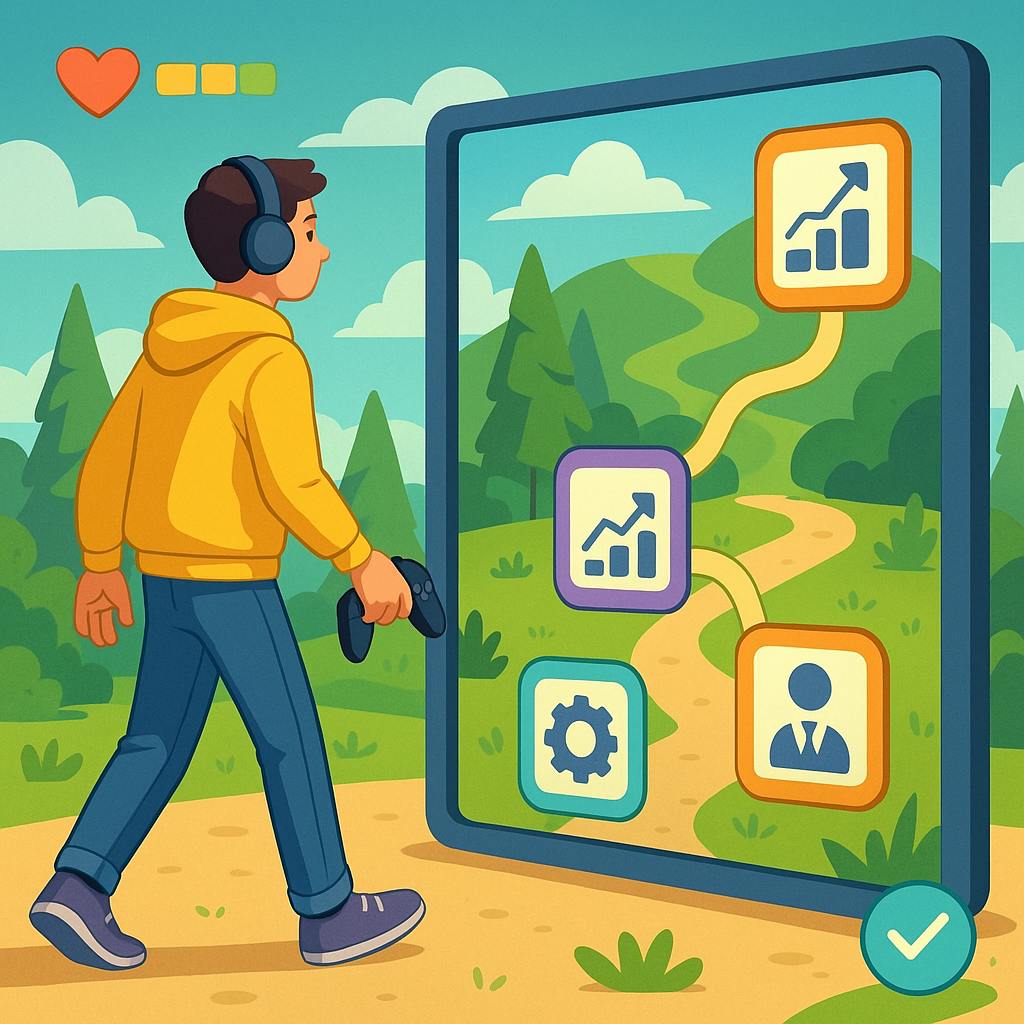Imagine if choosing your career was like choosing a character in a video game — but you got to try out the character before committing. You’d test their abilities, learn their strengths, discover their weaknesses, and see how they fit into different worlds. Only then would you decide if you wanted to spend the next few years playing as them.
That’s the idea behind what I call a career sandbox. It’s a place where you can explore possible futures without the real-world cost of a wrong turn. It’s also something our current education-to-employment pipeline sorely lacks.
The Problem with Career Choice Today
Most people choose a profession with shockingly little firsthand experience. A teenager picks a major based on family advice, a TV show, or the job market snapshot of that year. A recent graduate applies for a role they’ve never truly “played” before. The result? Trial-and-error hiring — a slow, expensive process that leaves candidates frustrated and employers disappointed.
In gaming terms, we’re asking people to pick their class and skill tree before they’ve even touched the controller. And then we wonder why so many feel stuck or mismatched later on.
What a Career Sandbox Looks Like
A career sandbox is a risk-free, interactive environment where you can experiment with different roles, challenges, and skill sets before making big decisions. Think of it as a blend of simulation, storytelling, and real-world problem-solving.
In this space, you might step into the shoes of a project manager leading a crisis meeting, a designer pitching a new product, or a data analyst making trade-offs under time pressure. You’d make decisions, face consequences, and receive immediate feedback — not as a grade on a paper, but as tangible insights into your strengths, blind spots, and natural tendencies.
It’s not about pretending. It’s about trying on identities.
Why Gen Z Is Ready for This
For Gen Z, the logic is obvious. This is the generation raised on games with skill trees, side quests, and constant feedback loops. They are used to learning by doing, adapting on the fly, and tracking progress through visible markers.
Traditional hiring, with its static job descriptions and feedback that arrives weeks (if at all) after an interview, feels like a system running on outdated mechanics. Career sandboxes, by contrast, speak their language: interactive, iterative, and personalized.
The Technology Making It Possible
Until recently, creating such environments at scale would have been unthinkable. But the pieces are now falling into place:
- Gamified assessments turn skill evaluation into engaging challenges instead of dry tests.
- AI-driven behavioral analytics interpret not just what you did, but how you did it, uncovering patterns invisible to the human eye.
- Dynamic digital profiles update in real time, reflecting growth and adaptability rather than static credentials.
- Immersive simulations replicate real workplace dynamics without the real-world stakes.
These tools don’t just measure competence — they reveal potential.
A Glimpse of How It Could Work
Picture a global career sandbox event. Participants create avatars and start with a basic profile. They choose a role to explore — say, product strategist, operations lead, or customer success manager.
Over several days, they progress through skill-based levels: designing a campaign, negotiating with a virtual stakeholder, troubleshooting a failing project. They submit short video introductions, complete role-specific tasks, and receive AI-driven feedback that maps their abilities to potential career paths.
The point isn’t to “win” a job. It’s to walk away with clarity: a better understanding of where you thrive, where you struggle, and how your strengths align with real opportunities.
Why This Shift Matters
If adopted widely, career sandboxes could flip the traditional hiring funnel on its head. Instead of employers screening based on credentials and then testing fit during probation, they could see evidence of capability before extending an offer.
For job-seekers, it removes the fear of “getting it wrong” early in life. Career exploration becomes psychologically safe — a space where failure is a data point, not a career-ender. And for employers, it reduces mismatches, shortens onboarding, and increases retention.
The larger impact is cultural. We start to move from a system that measures what people know to one that reveals who they are becoming.
The Next Level of Work
In many ways, the workplace itself is already becoming more like a game — with shifting rules, rapid leveling requirements, and the need for constant adaptation. What’s missing is the tutorial level, the safe training ground where people can figure out how to play before the stakes are high.
Career sandboxes could be that missing piece. They wouldn’t just prepare people for their next job; they’d prepare them for a lifetime of transitions in a world where change is the only constant.
And perhaps, in the not-so-distant future, your résumé won’t be a static document at all. It will be a living profile shaped by the challenges you’ve faced in these sandboxes — proof not of where you’ve been, but of the player you’ve become.


